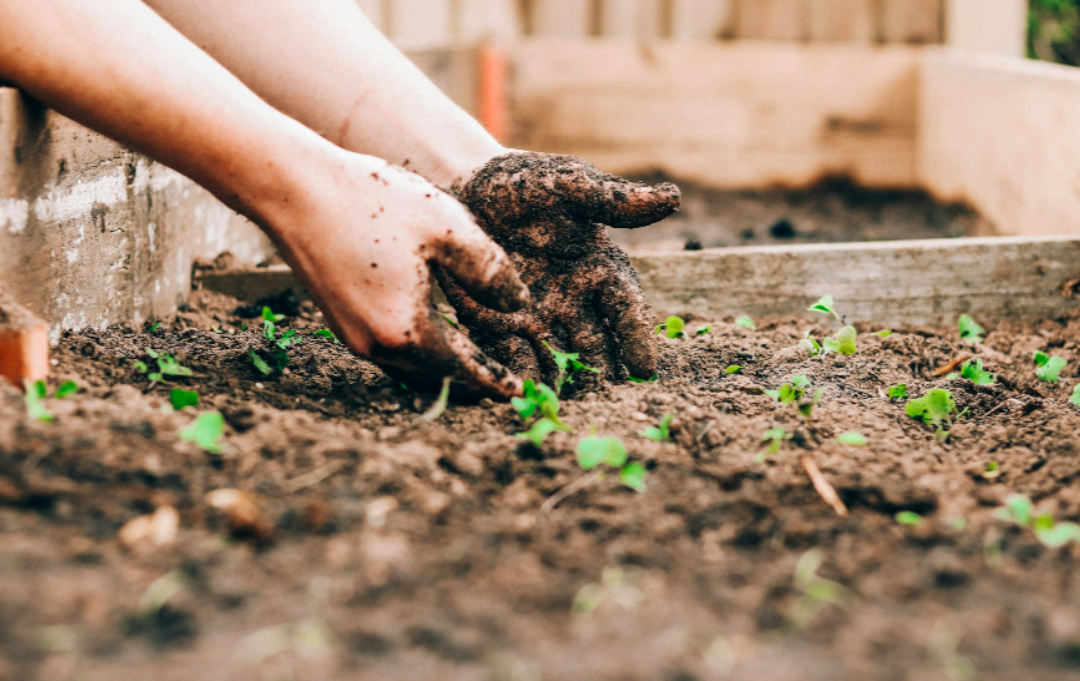
Module 2:
Carbon sinking to transform soil
Overview of module two
Module two is about understanding living soil and soil improvement with biochar and bokashi-composted food scraps.
This module explains how to assess the existing soil condition and then monitor changes, after carbon sinking. The resources provided will guide you through simple soil testing and building students’ knowledge of soil science.
Module two contents:
Learn about soil science
Dig in fermented food scraps
Understand carbon sinking
Learn about how biochar and bokashi compost transform soil
Witness the transformation of subsoil into wonderful topsoil.
Soil testing videos
Measuring Topsoil Depth Test
Infiltration Test
Soil Shake Test
Use these simple tests to establish and record what the existing soil is like, in order to measure changes over time. Here are the recommended before and after soil tests:
Infiltration test: to see how porous your soil is and how easily water will flow through it.
Topsoil depth test: to see how deep your layer of topsoil is and how resilient your soil is
Shake test: To see the composition of your soil and what is it made up of.
See Module Two Guide; PDF Handout for more information.
Carbon sinking is creating topsoil
Carbon Sinking is about creating topsoil using living plants, food scraps, biochar, soil microorganisms and worms. Topsoil usually takes decades to form, but through carbon sinking we are speeding up the process. By adding a diversity of starches and sugars in the form of food scraps and using biochar, microorganisms quickly multiply, creating healthy topsoil and storing carbon in soil.
The importance of keeping food scraps out of the landfill
Using worm bins, garden compost bins or bokashi composting is much better for the planet than putting them in the rubbish or down the insinkerator/garbage disposal! Food scraps in the rubbish end up in the landfill. Food scraps down the insinkerator/garbage disposal flow to the wastewater treatment plant where they are filtered out and are also put into the landfill.
Food scraps do not compost in a landfill; they break down into methane, a potent greenhouse gas that is drawn off and burned to generate electricity. The by-product of burning methane produces another greenhouse gas, carbon dioxide.
But food scraps added to soil, where plants are growing, can build topsoil. Plants remove carbon dioxide from the atmosphere through photosynthesis, turn it into starches and sugars and pump it into the ground to feed the soil “micro-biome”. This carbon storage in the soil life helps reverse climate change.
Digging In & Trenching: How to dig in school bokashi food scraps with biochar to create a carbon sink.
How food scraps returned to the soil help to capture carbon
Food scraps returned to the soil, in the form of compost or bokashi, help plants grow. Growing plants send roots into the soil which pump starches and sugars down to feed soil microorganisms and fungi. Roots, starches, sugars, fungi and microorganisms all contain carbon.
It is the carbon stored in all these living and forms that “sequesters” carbon and forms topsoil.
Growing living plants on the soil surface maintains the carbon in the soil by constantly feeding the soil life with starches and sugars. To keep the soil microorganisms alive, plants growing on top will continue to pump starches and sugars down to feed the soil microorganisms which store carbon.
Each metric ton (tonne) of food waste that ends up in a landfill generates approximately 0.86 tonnes of CO₂ equivalent (CO₂e) in methane emissions. This means that food waste is a significant contributor to methane emissions when placed in landfills.
-U.S. Environmental Protection Agency (EPA)
Module 2 Videos
Module Two resource downloads
Module Two Guide; PDF Handout: Soil transformation and digging in
Carbon sinking & soil fact sheet.pdf
Student worksheet infiltration and topsoil depth.pdf
Soil shake test: student worksheet.pdf

